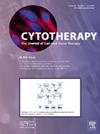脂肪间充质干细胞疗法对老年帕金森病患者的安全性和疗效:一项中等规模的扩大准入计划。
IF 3.7
3区 医学
Q2 BIOTECHNOLOGY & APPLIED MICROBIOLOGY
引用次数: 0
摘要
目标:这项中等规模的扩大准入计划旨在评估多次静脉注射自体Hope Biosciences脂肪间充质干细胞(HB-adMSC)治疗帕金森病(PD)老年患者的安全性和临床疗效:10名符合条件的参与者(76-95岁)在18周内接受了6次静脉注射,每次200MM自体HB-adMSC,第26周结束研究(EOS)。安全性通过不良事件(AE)和严重不良事件(SAE)进行评估。疗效通过运动症状和非运动症状的改善情况来衡量,采用的量表包括运动障碍协会统一帕金森病评定量表(MDS-UPDRS)I-IV部分、帕金森病问卷-39(PDQ-39)、帕金森病疲劳量表(PFS-16)、患者健康问卷-9(PHQ-9)和视觉模拟量表(VAS)。对患者报告的结果采用配对 t 检验和最小临床重要性差异 (MCID) 阈值进行分析:大多数 AEs(46 例中的 37 例)的严重程度较轻,报告了 5 例 SAEs,但均与药物无关。无死亡病例发生。尽管疗效终点缺乏统计学意义,但在EOS时,几个次要疗效终点(MDS-UPDRS第一和第三部分、PDQ-39和PHQ-9)出现了适度但有临床意义的改善,效应大小大于0.3,接近或超过了既定的MCID值:自体 200MM HB-adMSCs 在老年帕金森病患者中的应用安全且耐受性良好。虽然未达到统计学意义,但多个次要终点的临床表现略有改善。这些研究结果强调了该疗法在老年患者中的安全性,并突出了在评估临床相关性的同时评估患者疗效的统计指标的重要性。为了验证这些观察结果,有必要进行更大规模的随机安慰剂对照研究。本文章由计算机程序翻译,如有差异,请以英文原文为准。
Safety and efficacy of adipose-derived mesenchymal stem cell therapy in elderly Parkinson's disease patients: an intermediate-size expanded access program
Objective
This intermediate-size expanded access program aimed to evaluate safety and clinical efficacy of multiple intravenous infusions of autologous, Hope Biosciences adipose-derived mesenchymal stem cell (HB-adMSC) therapy in elderly patients with Parkinson's disease (PD).
Methods
Ten eligible participants (aged 76–95 years) received six intravenous infusions each with 200MM autologous HB-adMSCs over 18 weeks, with the end of study (EOS) at week 26. Safety was assessed through adverse events (AEs) and serious adverse events (SAEs). Efficacy was measured through improvements in both motor and non-motor symptoms, utilizing scales including Movement Disorder Society Unified Parkinson's Disease Rating Scale (MDS-UPDRS) parts I-IV, Parkinson's Disease Questionnaire-39 (PDQ-39), Parkinson's disease Fatigue Scale (PFS-16), Patient Health Questionnaire-9 (PHQ-9), and Visual Analog Scale (VAS). Analysis employed paired t-tests and Minimal Clinically Important Difference (MCID) thresholds for the patient-reported outcomes.
Results
Most AEs (37 out of 46) were mild in severity, with 5 SAEs reported, none attributed to the drug. No deaths occurred. Despite lack of statistical significance across the efficacy endpoints, modest yet clinically meaningful improvements with effect size > 0.3 were observed in several secondary efficacy endpoints (MDS-UPDRS part I & III, PDQ-39, and PHQ-9) at the EOS, nearing or surpassing the established MCID values.
Conclusions
The administration of autologous 200MM HB-adMSCs was found to be safe and well-tolerated in the elderly PD population. Although not achieving statistical significance, modest clinical improvements were noted across multiple secondary endpoints. These findings underscore the safety profile of the treatment in elderly patients and highlight the importance of evaluating clinical relevance alongside statistical measures for meaningful patient outcomes. Further investigation with a larger, randomized, placebo-controlled design is warranted to validate these observations.
求助全文
通过发布文献求助,成功后即可免费获取论文全文。
去求助
来源期刊

Cytotherapy
医学-生物工程与应用微生物
CiteScore
6.30
自引率
4.40%
发文量
683
审稿时长
49 days
期刊介绍:
The journal brings readers the latest developments in the fast moving field of cellular therapy in man. This includes cell therapy for cancer, immune disorders, inherited diseases, tissue repair and regenerative medicine. The journal covers the science, translational development and treatment with variety of cell types including hematopoietic stem cells, immune cells (dendritic cells, NK, cells, T cells, antigen presenting cells) mesenchymal stromal cells, adipose cells, nerve, muscle, vascular and endothelial cells, and induced pluripotential stem cells. We also welcome manuscripts on subcellular derivatives such as exosomes. A specific focus is on translational research that brings cell therapy to the clinic. Cytotherapy publishes original papers, reviews, position papers editorials, commentaries and letters to the editor. We welcome "Protocols in Cytotherapy" bringing standard operating procedure for production specific cell types for clinical use within the reach of the readership.
 求助内容:
求助内容: 应助结果提醒方式:
应助结果提醒方式:


